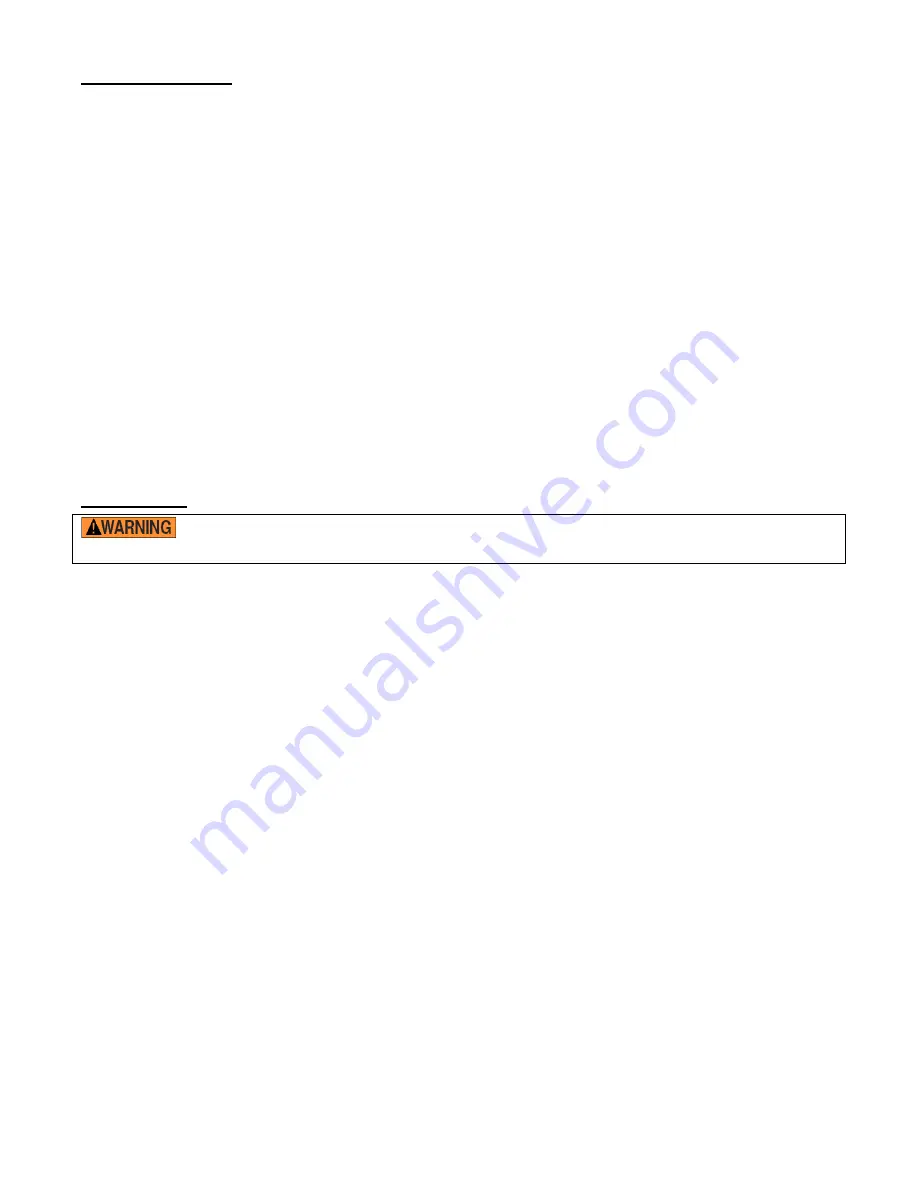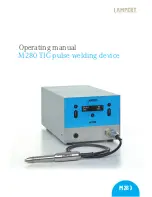
rev. 3/24/2014
LOW, manual.doc
Copyright 2014 Vestil Manufacturing Corp. 7 of 10
Use Instructions:
Before using the chain block, untangle and untwist the chains. Attach the load to the load hook via appropriate
rigging. Be certain to use only rigging that at least matches the capacity of your chain block (see “Product
Features” table on p. 2). DO NOT exceed the capacity of any component of your lifting system, i.e. crane, trolley,
chain block, rigging.
To raise the load:
1. Face the hand chain wheel of the chain block;
2. Pull down on the right side of the hand chain (pull chain clockwise);
3. As the hand chain turns the hand chain wheel, the load chain
The trolley of models LOW-1P, -2P, -4P and -6P is moved purely by manual power. To move the trolley, apply a
steady pulling force to the load or the load hook. Only release the load when it is centered beneath the trolley to
prevent the load from swinging.
The trolley used with models LOW-1G, -2G, -4G and -6G is moved by manual effort, but that effort is transmitted
to the track rollers through a gear system. To move the trolley, pull the hand chain one way or the other. As the
chain interacts with the hand chain wheel, it rotates the pinion, and the pinion causes the geared track rollers to
rotate.
To move the trolley to the left, face the hand wheel (of the trolley) and pull on the right side of the hand
chain.
To move the trolley to the right, face the hand wheel and pull on the left side of the hand chain.
Inspections:
DO NOT use the chain block-trolley combination until all problems discovered during an
inspection have been resolved.
Frequent Inspection:
At least once per month (once per week for heavy service chain blocks and daily for severe service
chain blocks), inspect all functional operating mechanisms. Inspect the trolley and chain block for
conditions that interfere with normal operation; correct/repair any problems identified during the most
recent inspection
:
a. Trolley:
i. Operation:
1. Move the trolley along the beam flange and evaluate its operation. The
trolley should roll smoothly along the flange.
2. Check both side plates of the trolley for evidence of spreading, bending,
warping, and cracking. Clearance between each roller and the beam
flange should be no more than 1/16in.
ii. Track rollers, pinion, suspension shafts, hand chain wheel, and suspension block:
Visually inspect each component. Confirm that all are in normal operating condition.
b. Chain block:
i. Load
chain:
1. Reeving. It should be reeved properly through the load sheave. Make sure
that it is not twisted, kinked or tangled.
2. Use the hand chain to raise and lower the load hook. Confirm that chains
and the associated gears, sprockets, etc. operate smoothly without
binding, jumping or unusual noise or other problems. Apply a load to the
chain block and reevaluate the function of the chains and sprockets.
3. The surface of the entire chain should be lubricated and be free of dirt and
other debris.
4. Links should be undamaged—no gouges, nicks, dents, corrosion, etc.
Individual links should not be bent or twisted. The points of contact
between links should not be significantly worn.
ii. Load hook: inspect the hook in accordance with ANSI/ASME B30.10; look for twists,
cracks, and elongations.




























